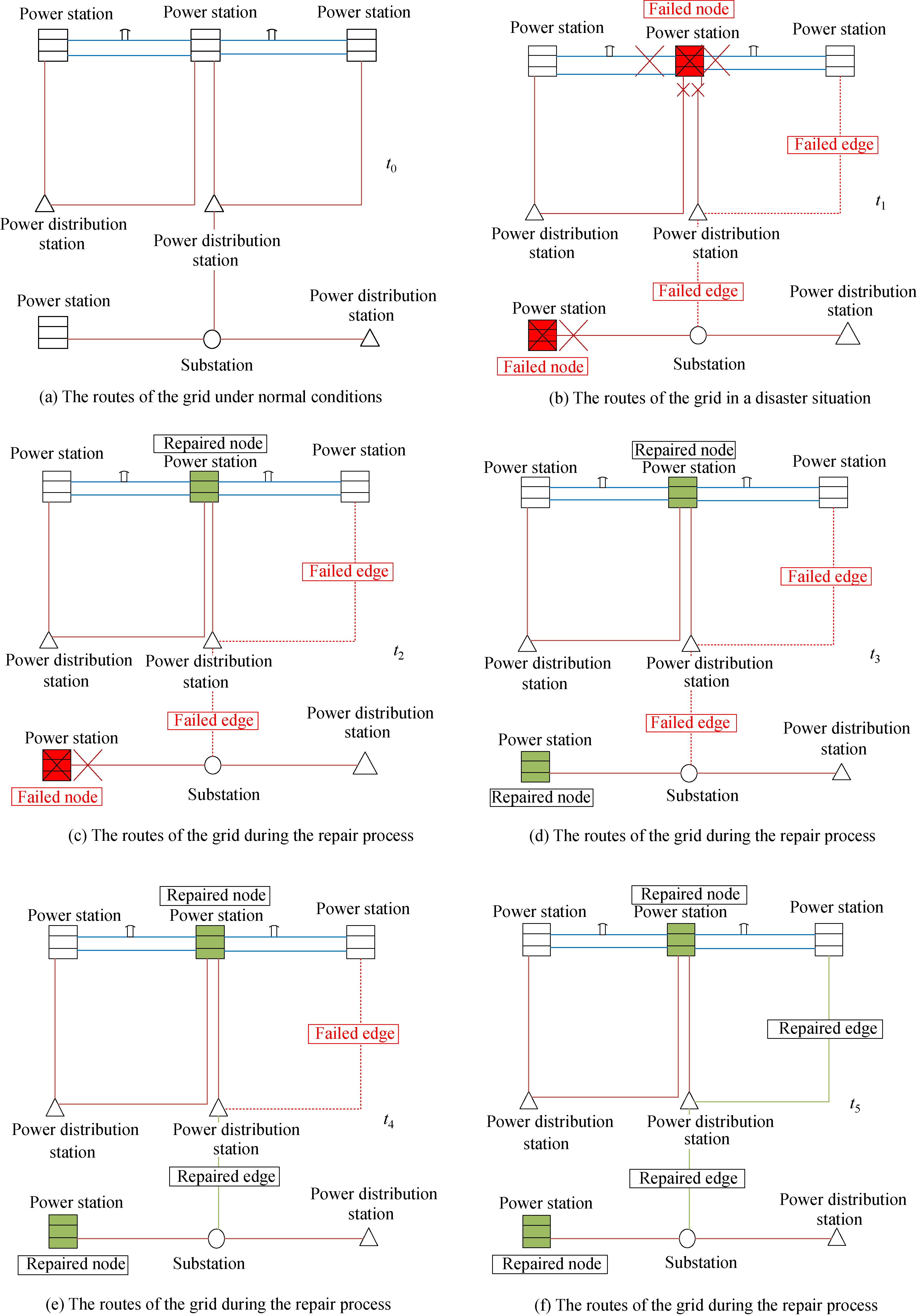In the development of a resilience analysis framework for power grids,
Huang et al. (2017a) introduced a comprehensive resilience response framework to improve the resilience of power grids and proved that topology switching can further improve the resilience of power grids.
Sun et al. (2019) proposed a Monte-Carlo-simulation-based resilience evaluation framework for the distribution system and quantified resilience from the perspective of robustness and rapidity.
Ge et al. (2019) studied the vulnerability model of the overhead system and proposed a resilience evaluation method based on load loss. To capture cascading failures in critical infrastructure,
Krishnamurthy et al. (2020) proposed a general critical infrastructure resilience model for power grids under extreme events.
Younesi et al. (2020) introduced a quantitative evaluation framework for power system resilience by considering the multi-micro-scale effect, which includes various features emphasized in the concept of power system resilience.
Liu et al. (2020) introduced a resilience assessment framework to help design a highly resilient power transmission system against extreme weather events, such as typhoons.
Zhong et al. (2020) defined network endurance as the cascade duration at criticality before complete network breakdown and developed an approach to endurance evaluation based on the load-dependent overload model.
Panteli et al. (2017) evaluated different risk-based resilience enhancement measures for power transmission systems and introduced a probabilistic multi-period and multi-region resilience assessment method based on optimal power flow and sequential Monte Carlo simulation.
Luo et al. (2018) proposed an evaluation method for distribution network resilience based on the influence of critical load under extreme weather events.
Meng et al. (2018) comprehensively analyzed the connotation, attribute, and composition of community, resilience, and community resilience by summarizing the important issues and research progress in community resilience.
Abdin et al. (2018) presented a comprehensive resilience modeling and optimization framework for power system planning under extreme weather conditions.
Sabouhi et al. (2020) provided a basic framework with emphasis on high winding density for the quantification and modeling of power system resilience. On the basis of a proposed resilience metric,
Cai et al. (2018) developed a corresponding evaluation methodology based on dynamic Bayesian networks.
Fang et al. (2019) presented a
p-robust optimization model for infrastructure network planning against spatially localized disruptions.











